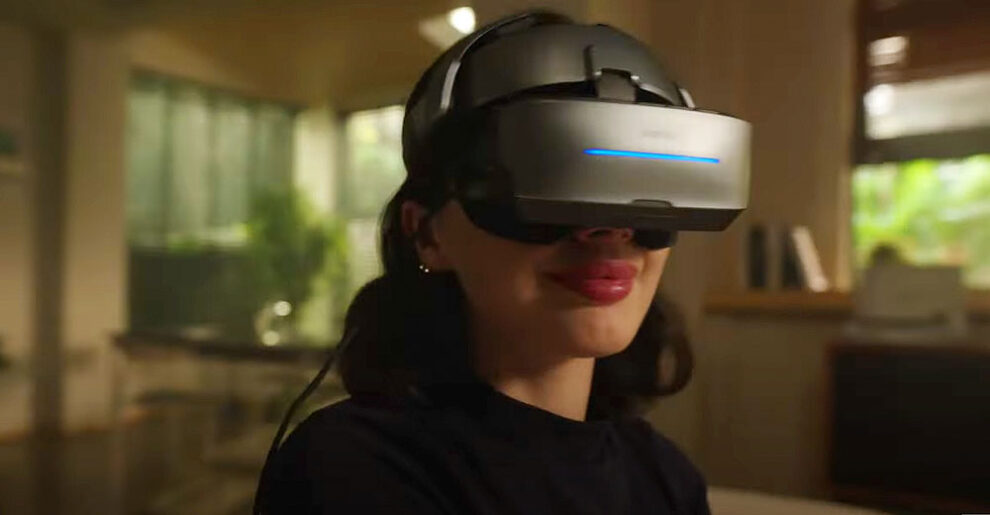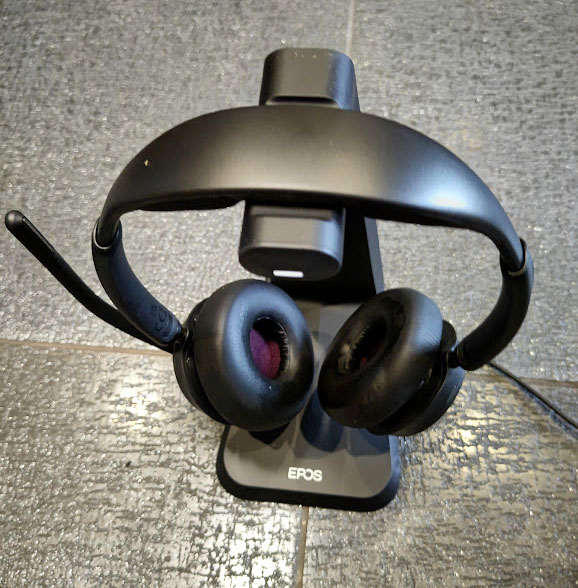Apple Vision Pro was a head-mounted display that I loved when it first came out. announcedAs luck would have had it, I already ordered the Goovis G3 Max Indiegogo. It’s been several weeks since I started using it. It’s awesome and does pretty much what Tim Cook demonstrated for the Vision Pro on stage.
The Vision Pro has a list of $3,499 whereas the G3 Max only costs $869 compared to a $1 299 list price. Early buyers got theirs for less than $800. That was a great deal.
Let’s talk about how the Goovis G3 Max compares to the Apple Vision Pro.
I’ll end with the Product of the week, a headset which might just be what you need for desktop video conferencing.
Apple Vision Pro
Apple promoted the Vision Pro device as a professional-grade product, with all of the technology included. The Vision Pro is a standalone device that cannot be used to display your iPhone or laptop. Apple’s WWDC demonstration showed how iOS apps and movies would appear superimposed on one’s surroundings using the Vision Pro.
(Image Credit: Apple)
Apple’s approach is to always try and sell you a more expensive product. It has never produced a dual-purpose laptop or tablet. You bought an iPad if you were looking for a tablet; you bought a MacBook if you were looking for a notebook.
Apple initially focused on the video capabilities and user experience of the Vision Pro. Apple’s platforms and devices are not known for their gaming capabilities, even though the device has VR and gaming capabilities. Vision Pro operates with hand gestures and no controller. This suggests that Apple will require a controller accessory if it decides to enter the gaming market.
The Voice part of Vision Pro is still not ready. Apple has not yet mastered generative AI and I expect that there will be some difficulties in getting this capability to work. The eye and hand components appear to be more mature in comparison.
Vision Pro does not appear to work with glasses. Contacts will, however, be fine. The price of an adaptive lens is between $300 and $650 extra for those who need vision correction.
The mask fits tightly to your face. The top is not supported, and some testers complained about the pads marking their faces or the pressure getting annoying over time, such as when watching movies.
The 4K display for each eye should make videos look stunning, and the tight fit will keep out ambient light. It has a digital crown, kind of like a watch, that allows you to control your level of immersion and potentially blends what the cameras on the device see with the content so you can see what is happening around you — though I wouldn’t wear these walking or driving.
Apple Vision Pro’s EyeSight enables users stay in tune with their surroundings as they engage with augmented realities (Images Credits: Apple).
You can plug in the battery, which should last two hours. This is possible at home, in a car, on a plane.
Apple Vision Pro has to be one of the most beautiful head-mounted displays that I have ever seen.
Goovis Max G3
The Goovis G3 Max may not look as nice as the Vision Pro but it has top support that will take pressure off of your face.
It may not seal as tightly to your face, so there could be some external light leaking. It was annoying but not too bad, even when I used the device outdoors.
The Goovis is much more comfortable to wear than Vision Pro. And I have worn it for several hours with no discomfort or marks left on my face.
The Goovis has higher resolution displays and a better color gamut than the Vision Pro (3,528 vs. 3,400 dpi and >95% vs. >90% DCI-P3), but I doubt you would notice the difference.
Goovis, by itself, is a simple display. However, it includes a streaming media device with a built-in battery. If you do not want the media device, you can connect it to a set top box, smartphone, PC or game console with a USB C or HDMI cable.
The battery life of the media player is approximately 3 hours. You can charge it while you play if using the USB-C longer cable that it comes with.
The Goovis does not have an external camera, but comes with a TV controller that allows you to stream content. It runs Android TV and should be able to load all third-party streaming applications, including Apple TV+. (I did not attempt to load Apple TV+).
The device worked with YouTube Premium, Netflix and Amazon Prime. I watched movies on my balcony in the afternoon, and didn’t realize until I looked up that the sun was already down.
The headset comes with an HDMI-in as well as an adapter to USB-C. This allows it to work with any device that has a USB output or HDMI. For instance, if you want to play a game, you can plug it into an Xbox, PlayStation, or Nintendo Switch and have your own huge-screen gaming experience — something you may not be able to do with the Vision Pro.
I told you that I watched a movie using the Goovis G3 Max. I was watching the new Flash film, and it was like I had my own IMAX-screen that I could take anywhere.
The Goovis comes with built-in speakers. However, they are very weak and I would not recommend using them. A good wired set of headphones can make all the difference. You could be watching a movie in a quiet movie theater with headphones and the display in front of you.
The headset comes with a diopter adjustment built in for each eye. You don’t need to use prescription lenses.
Which one is better?
The Goovis G3 Max, which is currently available, is better than the Apple Vision Pro because it is more affordable.
Apple Vision Pro, with its advanced cameras and software, will ultimately be more capable than Goovis. When you consider that Goovis can connect with more devices, such as game consoles and smartphones, it gains the advantage in terms of content.
The Goovis is the clear winner, even if it doesn’t have the price advantage. Apple’s limitations would make me think twice about the $2,000 difference between these two devices.
The Goovis G3 Max will do the same thing as the Apple Vision Pro. It can also be enhanced with other devices, such as game consoles. This allows you to be more immersed in the action, and connect you to a better gaming experience than you would be able to achieve on a device of this class.
For the price and for what both devices can initially do, Goovis has the edge, especially because you won’t have the option to purchase the Apple device before next year. I do expect that, after Apple’s announcement of a few new products, we will see them soon.
Since the start of Goovis several years ago, I’ve been using their products. I’ve enjoyed all my Goovis products, but one flew off the roof of my car when I left it.
You can enjoy your favorite content in any location you like, including a plane, bus, boat or anywhere else you feel comfortable. Just remember to wear headphones to not disturb others.
EPOS Impact 1000 Headset
I love headphones. When I travel or have to work in a shared office or cubicle, I often use headphones.
Desktop headphones are often not very good at reproducing music and other audio formats. They tend to have speakers that are optimized for voice, but they’re not great for music. So I need to bring two sets of headphones with me, one for music and the other for work.
Sennheiser is the manufacturer of the EPOS Impact 1000 headphone. As you would expect, the audio quality is excellent. These headphones aren’t cheap, either. They cost around $430 (you may be able find them cheaper). They do have a few features that I like. They charge inductively on their stand, for example.
EPOS Impact 1000 ANC headphone (Photo by the Author)
It takes me some time to properly position the headphones so that they can charge. The EPOS Impact 1000 headphones don’t have this problem. Just place the headphones on the stand.
These headphones are still geared towards voice. This means that music vocals will be very clear but lows and depth of music are not as deep. If given the choice, headphones made for music would perform better. However, these would be superior for voice-focused apps like video conferencing or internet calls.
These EPOS headphones have Bluetooth capabilities, which means they can be used with any Bluetooth-enabled device, including smartphones, tablets, laptops, and PCs. It includes a USB Bluetooth Dongle for desktop computers that can be used with PCs, smartphones and Bluetooth. Also included is a USB-C Cable, a Stand/Charger, and a Carry Case. You can rotate the microphone so that you can place it either on your left or right side.
The EPOS Impact 1000 headphones are a great choice for noise reduction, especially when compared to other over-the-ear headphones. They can be paired with up three devices. The battery life of this device is excellent. The device can last for days on normal usage. If you don’t want to carry the large headset stand that is well designed, but also bulky, then you can charge it with a USB cable.
There are several different versions of the product, including:
- 1061 Headset without Noise Cancellation
- The 1061T is not noise cancelling and has Microsoft Teams certification.
- 1061 ANC with noise cancellation — like the one I tested; and
- The 1061T comes with Microsoft Teams certification, active noise cancellation and Microsoft Teams certification.
You can compare them all on the website. You can compare all of them on the EPOS website.
I am wearing these headphones as I write this while listening to music — and making the EPOS Impact 1000 1061 ANC version is my Product of the Week.
This article is written by an individual and does not reflect the opinions of ECT News Network.















